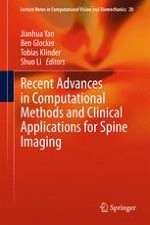2015 | OriginalPaper | Buchkapitel
An Active Optical Flow Model for Dose Prediction in Spinal SBRT Plans
verfasst von : Jianfei Liu, Q. Jackie Wu, Fang-Fang Yin, John P. Kirkpatrick, Alvin Cabrera, Yaorong Ge
Erschienen in: Recent Advances in Computational Methods and Clinical Applications for Spine Imaging
Aktivieren Sie unsere intelligente Suche, um passende Fachinhalte oder Patente zu finden.
Wählen Sie Textabschnitte aus um mit Künstlicher Intelligenz passenden Patente zu finden. powered by
Markieren Sie Textabschnitte, um KI-gestützt weitere passende Inhalte zu finden. powered by
